My goal is to analyse how frequency of names found among Disney female characters changed over time in the US. Specifically, I want to see if the movie release had any impact on their popularity. For this purpose, I will use babynames dataset that is available on CRAN.
The idea for the exercise was inspired by Sean Kross’ blog post
Short description of the dataset
from CRAN package description
The SSA baby names data comes from social security number (SSN) applications. SSA cards were first issued in 1936, but were only needed for people with an income. In 1986, the law changed effectively requiring all children to get an SSN at birth.
The dataset is quite simple, covering US baby name records from late 1800’s until 2014. It specifies whether a name is male or female, number of respective names in a given year and what proportion they constituted.
library(babynames)
baby <- babynames
baby$sex=as.factor(baby$sex)
summary(baby)## year sex name n
## Min. :1880 F:1100858 Length:1858689 Min. : 5.0
## 1st Qu.:1950 M: 757831 Class :character 1st Qu.: 7.0
## Median :1983 Mode :character Median : 12.0
## Mean :1973 Mean : 183.4
## 3rd Qu.:2002 3rd Qu.: 32.0
## Max. :2015 Max. :99680.0
## prop
## Min. :2.260e-06
## 1st Qu.:3.900e-06
## Median :7.350e-06
## Mean :1.391e-04
## 3rd Qu.:2.324e-05
## Max. :8.155e-02Installing packages
library(dplyr)## Warning: package 'dplyr' was built under R version 3.4.4##
## Attaching package: 'dplyr'## The following objects are masked from 'package:stats':
##
## filter, lag## The following objects are masked from 'package:base':
##
## intersect, setdiff, setequal, unionlibrary(ggplot2)## Warning: package 'ggplot2' was built under R version 3.4.4Quick data pre-prep
I assign each name to a separate dataframe.
ariel <- baby %>%
filter(name == "Ariel", sex == "F")## Warning: package 'bindrcpp' was built under R version 3.4.4belle <- baby %>%
filter(name == "Belle", sex == "F")
jasmine <- baby %>%
filter(name == "Jasmine", sex == "F")
tiana <- baby %>%
filter(name == "Tiana", sex == "F")
merida <- baby %>%
filter(name == "Merida", sex == "F")
elsa <- baby %>%
filter(name == "Elsa", sex == "F")Next, I create variables specifying the release date of a movie with character’s name.
# The Little Mermaid
ariel_release = 1989
# Beauty and the Beast
belle_release = 1991
# Alladin
jasmine_release = 1992
# The Princess and the Frog
tiana_release = 2009
# Brave
merida_release = 2012
# Frozen
elsa_release = 2013Plots
Finally, I plot the number of names for a given year. The arrows indicate when the movie was released, so that it’s easier to compare before and after trend. Additionally, I show the number of names and their proportion for a year proceeding and following the movie release. The numbers (and graphs!) say it all :-)
Trends
Namely, the movie release indeed seems to have a positive impact on name popularity, at least short- , but often long-term. For example, Ariel, Belle showed much higher popularity that in pre-release days even a decade after the movie has been published.
Ariel
ggplot(ariel, aes(x=year, y=n)) +
geom_line(col="red") +
xlab("") +
ylab("") +
ggtitle("Ariel") +
geom_segment(aes(x = ariel_release, y = 0, xend = ariel_release, yend = 500), arrow = arrow(length = unit(0.1, "cm"))) +
theme_minimal()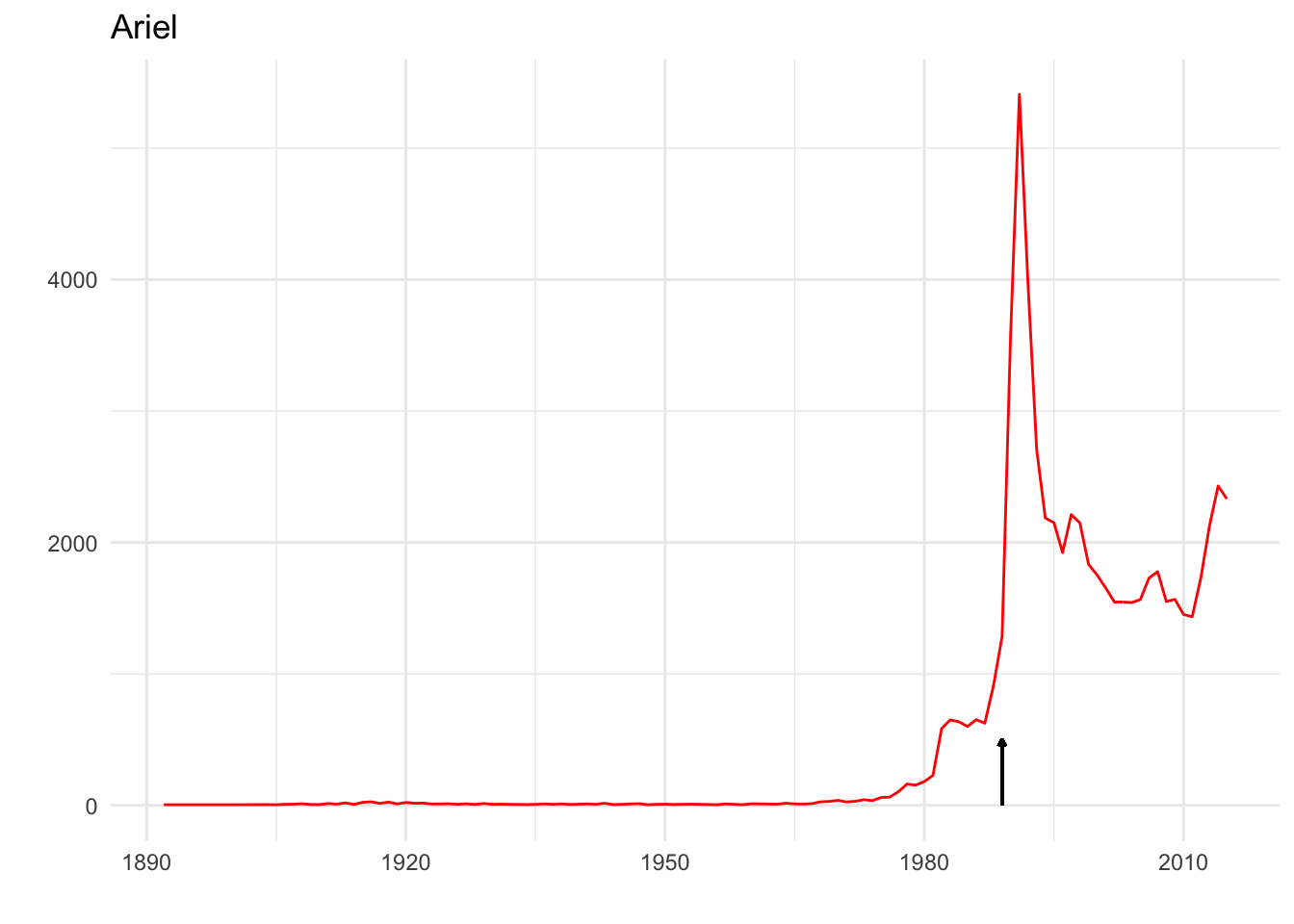
ariel %>%
filter(year %in% c(ariel_release - 1, ariel_release + 1)) %>%
mutate(when = ifelse(year == ariel_release - 1, "1 yr before",
"1 yr after"))## # A tibble: 2 x 6
## year sex name n prop when
## <dbl> <fct> <chr> <int> <dbl> <chr>
## 1 1988. F Ariel 910 0.000473 1 yr before
## 2 1990. F Ariel 3605 0.00176 1 yr afterBelle
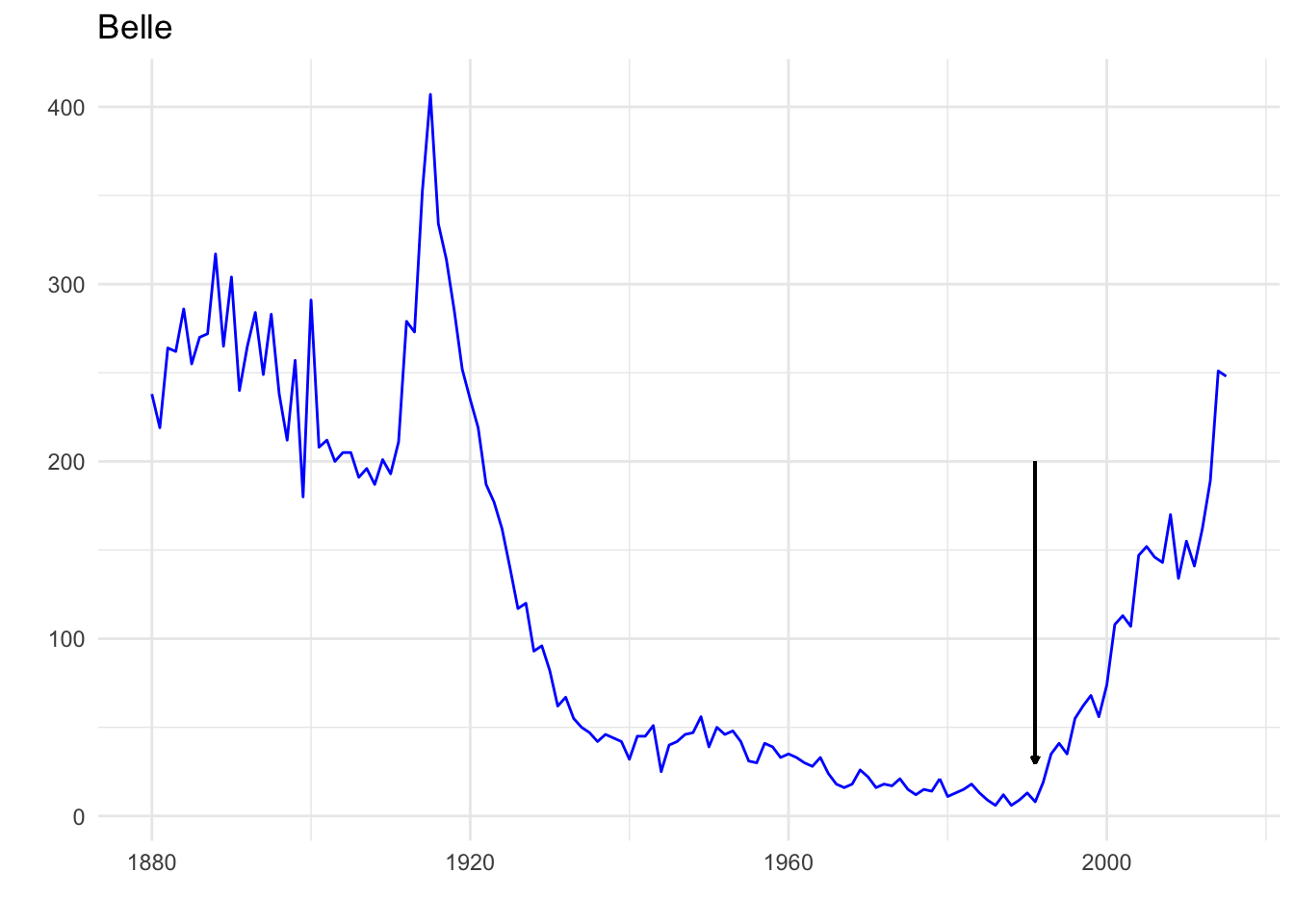
## # A tibble: 2 x 6
## year sex name n prop when
## <dbl> <fct> <chr> <int> <dbl> <chr>
## 1 1990. F Belle 13 0.00000633 1 yr before
## 2 1992. F Belle 19 0.00000948 1 yr afterJasmine
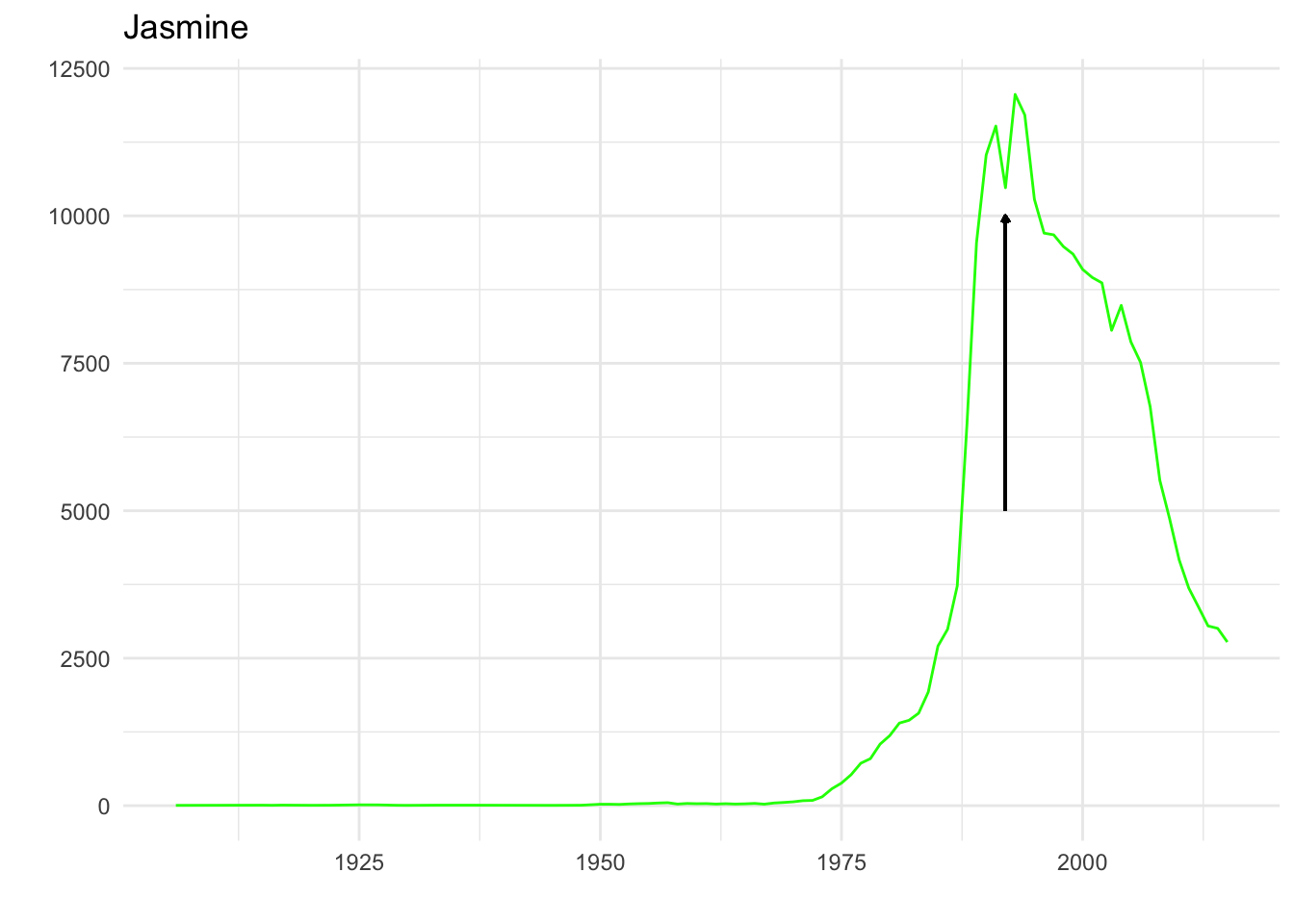
## # A tibble: 2 x 6
## year sex name n prop when
## <dbl> <fct> <chr> <int> <dbl> <chr>
## 1 1991. F Jasmine 11522 0.00567 1 yr before
## 2 1993. F Jasmine 12059 0.00612 1 yr afterOn the other hand, in case of Jasmine and Tiana, the positive effect of the Disney movie release on name’s popularity was rather short-term, although strong.
Tiana
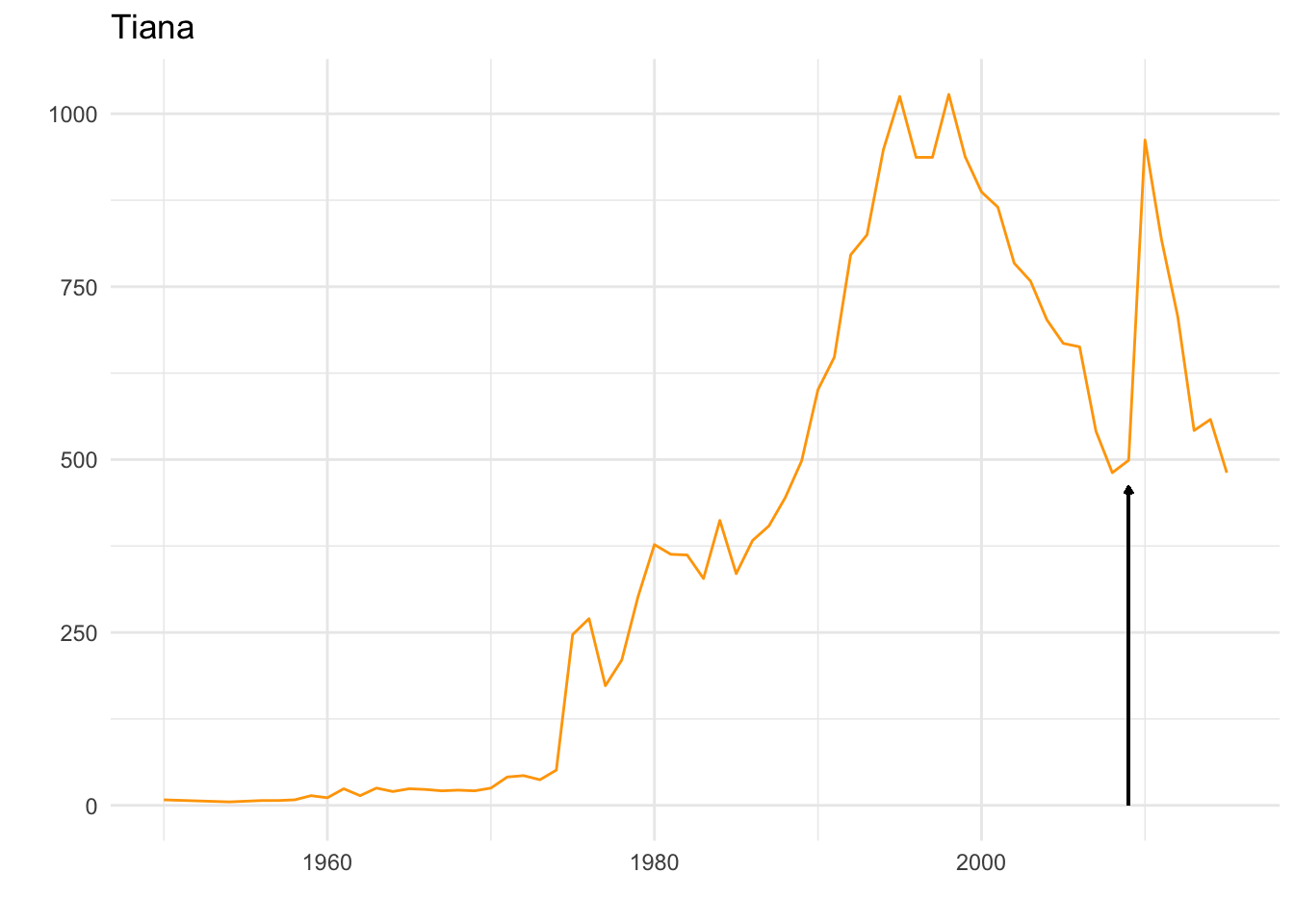
## # A tibble: 2 x 6
## year sex name n prop when
## <dbl> <fct> <chr> <int> <dbl> <chr>
## 1 2008. F Tiana 481 0.000231 1 yr before
## 2 2010. F Tiana 962 0.000492 1 yr afterMerida
Finally, it’s difficult to judge the long-term effect for names Merida and Elsa, as both movies have been released very recently, but at least a year following the release showed a remarkable jump in names’ popularity.
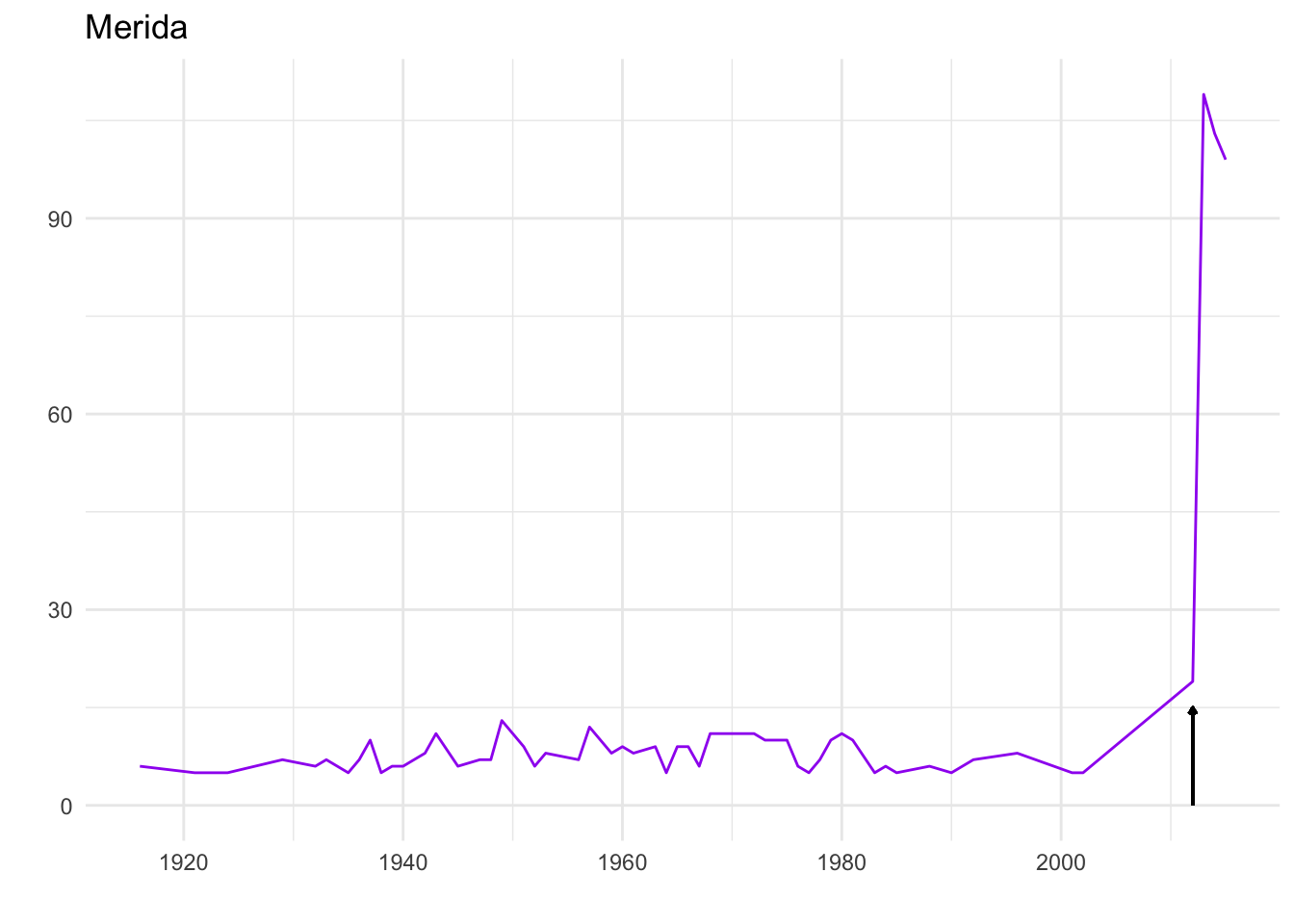
Here, the 1 year before and after comparison is not possible, as the movie was released in 2012 and no baby was called Merida in the US between 2002 and 2012. This still proves how powerful Disney movies can be!
tail(merida)## # A tibble: 6 x 5
## year sex name n prop
## <dbl> <fct> <chr> <int> <dbl>
## 1 2001. F Merida 5 0.00000253
## 2 2002. F Merida 5 0.00000253
## 3 2012. F Merida 19 0.00000982
## 4 2013. F Merida 109 0.0000567
## 5 2014. F Merida 103 0.0000529
## 6 2015. F Merida 99 0.0000512Elsa

## # A tibble: 2 x 6
## year sex name n prop when
## <dbl> <fct> <chr> <int> <dbl> <chr>
## 1 2012. F Elsa 540 0.000279 1 yr before
## 2 2014. F Elsa 1138 0.000584 1 yr afterAll in all, it goes to show that Disney movies are an important part of our culture that has the power to influence our lives in surprising ways :)